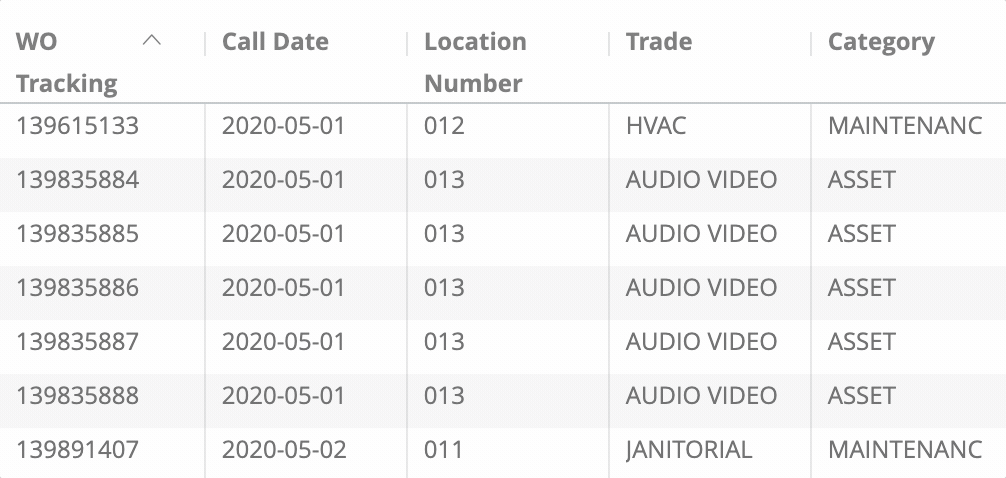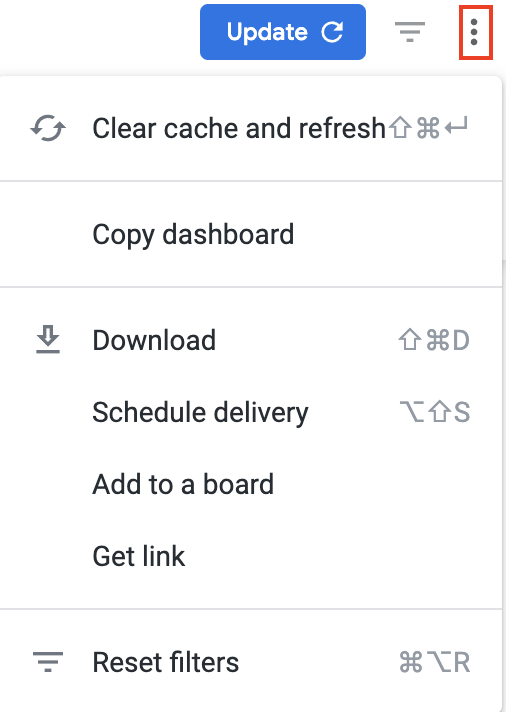- Created by Caroline Antoun , last modified on Jun 20, 2024
You are viewing an old version of this content. View the current version.
Compare with Current View Version History
« Previous Version 7 Next »
The Price tab of the Network Summary Dashboard in Contractor Scorecard 2.0 allows you to look at provider performance around 5 Price KPIs and compare your provider(s) across the entire ServiceChannel platform of providers.

US Only
Price score is for US locations only due to the reliance on Core Based Statistical Analysis (CBSA) data that is defined by US Office of Management and Budget. Scoring is dynamic and heavily reliant upon current marketplace data in order to be the most relevant.
Sections:
To view Price Score Calculations jump on over to Contractor Scorecard 2.0 Calculations.
Filters
Refine and deepen your insights by filtering for specific provider(s), priorities, trades, geographic area, company name, and performance.

Provider Name: You can filter for a singular provider for a review or compare several providers.
Primary Trade: Search for providers by one trade or several similar trades to get insight on trade specific performance.
Primary Priority: Look at scores associated with work orders of a the same priority.
Market (US): Search for providers in Core Based Statistical Areas (CBSA). CBSAs are geographic regions defined by the US Office of Management and Budget that are anchored around urban centers of 10,000+ people along with adjacent counties that have strong social and economic ties to the urban center. This allows you to get a true comparison of provider performance, particularly around cost and speed, as the environment is more similar in that area. For example, if you compared cost for providers in Dallas, TX, you get a more accurate picture comparing them amongst each other than if you compared Dallas providers to Fredericksburg, TX providers.
Company Name: Filter for certain companies in your portfolio.
Performance Level: View scores by the platform wide performance level.
When you filter to a specific data point, your specific data will be ranked against the entire ServiceChannel platform not just that specific data in the platform. Ex: If you filter to see the performance of your plumbers, the dashboard will show how your plumbers rank against the entire platform. It will not compare your plumbers against all plumbers. Stay tuned! That feature is coming out soon with Benchmarking!
Provider Count

This tile shows the total amount of providers who have a Speed score for the criteria you have filtered. Click on the number to drill into who are the specific providers.
Overall Network Quality
 This chart shows how your provider(s) rank across the ServiceChannel platform and is broken down into quartiles: Top, Average, Below Average, and Bottom. Click on each bar to view which providers fall into a specific quartile.
This chart shows how your provider(s) rank across the ServiceChannel platform and is broken down into quartiles: Top, Average, Below Average, and Bottom. Click on each bar to view which providers fall into a specific quartile.
When you filter for one provider, you will only see the number 1 in provider count and over the one bar that will be the color of the platform wide performance tier that provider falls in for Speed. The example below, the provider is in the average tier.

Provider Details Table

The Provider details table shows the overall Quality Score along with Completed Repair Work Order Count and 4 Quality KPIs:
Median Invoice Amount Without Proposals Median Invoice Amount With Proposals | Invoices Completed <2 labor hrs Invoices Completed >5 labor hrs | Invoice to NTE Comparison |
|---|
Commonly Used Features
Below is a quick reference guide regarding tracking numbers in Analytics, filtering, sorting, downloading data, and sending reports.
Tracking Numbers in Analytics
Throughout Analytics you can drill down into visualizations to see the underlying data. In most cases, the tracking numbers related to that data are listed. You can click the tracking number to navigate straight to the work order details in Service Automation.
Filtering Dashboards
On top of the report are all-inclusive filters to help you hone in on key data. All reports on the page are affected by the criteria set in these all-inclusive filters.
The filter criteria for each dashboard may differ. Filters reset to the default when the page is refreshed.
Click filter field to show the criteria.

Select the desired criteria to include or exclude:
To Include criteria: select is equal to, contains, starts with, or ends with, and then begin typing the criteria in the picklist. Select the desired criteria (or multiple criteria) from the picklist.
To exclude criteria: select is not equal to, does not contain, does not start with, or does not end with.
Is null depicts the absence of data in a data set. Conversely, is not null depicts the presence of data
To include or exclude data without a certain data criteria — for example, to select data without a Region or District assigned in Service Automation — choose is blank / is not blank.
To add more options, click the plus sign (+) next to a field to add another option to the filter. The new option will appear as either an OR condition or an AND condition, depending on the type of filter option.
Once all criteria are selected, click Refresh icon in the top-right corner. The Dashboard report updates with the selected criteria.
More details are available on Filtering an Analytics Dashboard
Dynamic Table Sorting
Analytics tables are dynamic, as you can:
- click column and row headers to sort data (the arrow indicate which data is sorted),
- hover over a header to show the gear icon where you can interact with the data more dynamically, and
- drag and drop a header to rearrange the table.

Downloading and Sending Reports
In the upper-right corner of any page, click the Vertical Ellipses to download reports, schedule delivery of reports at regular intervals, add to a board, or get a link.

You can download data from a table and visualization or download a dashboard tabto PDF or CSV.
- On the desired table or visualization, hover over the upper-right to expose the 3 dots menu, and then click Download Data. The Download modal appears.

Select the desired File Format and choose a File Name: A default name is listed but you can change it.
- Click Download.
On the desired dashboard (or dashboard tab), click the Gear icon in the upper-right of the page, and then click Download as PDF. The Download modal appears.
A default Filename appears, but you can change it.
Under Advanced options:
Single-column format lays out all tables and visualizations on a page into one column in the PDF, as opposed to how it is laid out in the dashboard.
Expand tables shows all rows in a table, instead of just the rows that appear on the dashboard.
Paper size adjusts the PDF to your desired size.
Click Open in Browser to view the PDF in your chosen browser, or click Download to save a version of the report onto your device.
On the desired dashboard (or dashboard tab), click the Gear icon in the upper-right of the page, and then click Download as CSVs... A new browser tab opens.
After the files render, you are prompted to save the CSV Zip file onto your device.
More details are available on Downloading and Sending Dashboards and Reports
You can also Send a one-time report via email or Schedule a recurring email send.
On the desired dashboard (or dashboard tab), click the Gear icon in the upper-right of the page, and then click Send. The Send (Dashboard Name) modal opens.
A Title is given by default, but you can change it.
Under Who should it be emailed to?, enter the desired recipient(s), separated by a comma, and then click Add.
(Optional) Click Include a custom message to add a personal note.
Under Format data as, choose PDF, Visualization, or CSV Zip file.
(Optional): Click Filters to limit the criteria that appear in the email. Note that the same filters on the dashboard itself will also appear here.
Click Send. The email is sent to your recipients.
On the desired dashboard (or dashboard tab), click the Gear icon in the upper-right of the page, and then click Schedule. The Schedule (Dashboard Name) modal opens.
A Title is given by default, but you can change it.
Under Who should it be emailed to?, enter the desired recipient(s), separated by a comma, and then click Add.
(Optional) Click Include a custom message to add a personal note.
Under Format data as, choose PDF, Visualization, or CSV Zip file.
Under Deliver this schedule, choose Daily, Weekly, Monthly, Hourly, or By minute (in 5-minute increments, up to 30 minutes)
(Optional): Use Filters to limit the criteria that appear in the email. Note that the same filters on the dashboard itself will also appear here.
Click Send. The email is sent to your recipients.
More details are available on Downloading and Sending Dashboards and Reports
-
Page:
-
Page:
-
Page:
-
Page:
-
Page:
-
Page:
-
Page:
-
Page:
- No labels
